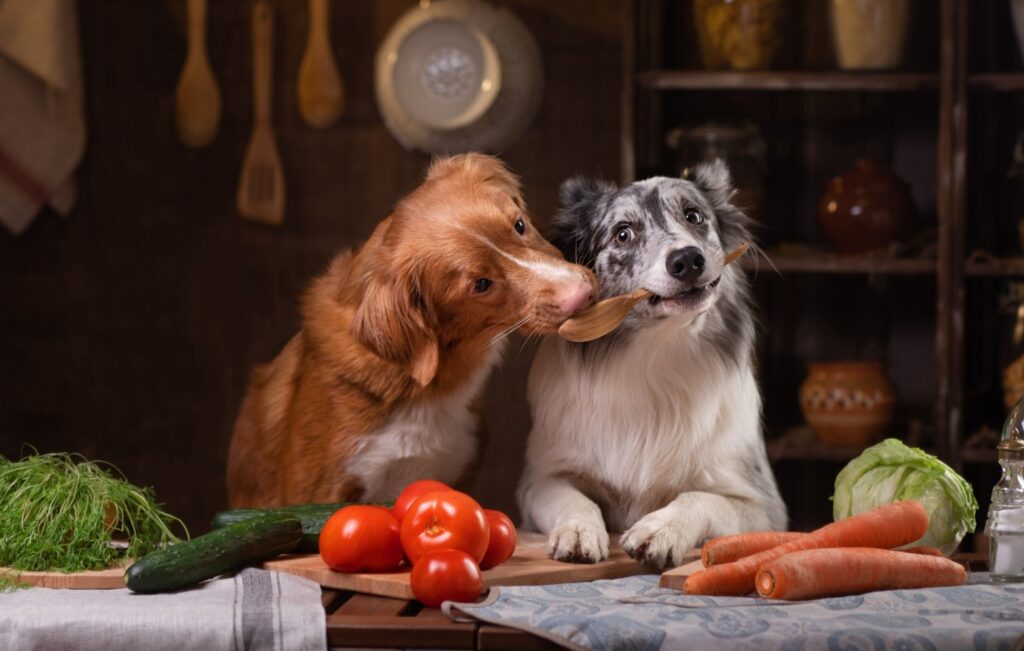
Hey there, dog lovers! Feeding your dog isn’t just about filling their bowl—it’s about fueling their health, happiness, and those tail-wagging moments we all cherish. Just like mastering dog training requires understanding key events, optimizing your dog’s diet involves knowing the rules of the game. In this article, I’ll break down two popular approaches: diet rotation and raw feeding (specifically the BARF diet). By understanding the benefits, challenges, and guidelines of each, you’ll be equipped to make informed choices that keep your canine companion thriving. Let’s dive in!
The Benefits and Challenges of Diet Rotation
Imagine eating the same meal every day for years—pretty dull, right? Dogs can feel the same way about their kibble. Diet rotation involves periodically switching between different brands, proteins (like chicken to fish), or formats (kibble to wet food). This approach keeps mealtime exciting, but it’s not just about variety. Let’s explore why rotation can be a game-changer and what to watch out for.
Why Rotate?
- Variety Sparks Joy: Dogs, like us, can get bored with the same old food. Rotating flavors and textures makes mealtime a fun adventure, reducing picky eating habits (The Honest Kitchen).
- Nutritional Balance: No single dog food is perfect. Each brand or formula has unique strengths—some are rich in omega-3s, others in specific vitamins. Rotating ensures your dog gets a well-rounded mix of nutrients, reducing the risk of deficiencies (NorthPoint Pets).
- Allergy and Sensitivity Detection: If your dog’s scratching or having tummy troubles, rotating foods can help pinpoint problem ingredients, like chicken or wheat, allowing you to adjust their diet (PetMD).
- Gut Health: Regular changes can make your dog’s digestive system more adaptable, potentially improving their gut microbiome and overall health (Stella & Chewy’s).
Challenges to Consider
- Digestive Upset: Sudden food changes can lead to diarrhea or vomiting—nobody wants that mess! Transition gradually over 7-14 days by mixing new food with the old (Dog Food Advisor).
- Cost and Storage: Buying multiple foods can strain your budget, and keeping them fresh requires proper storage. Stale kibble isn’t exactly appetizing.
- Picky Eaters: Some dogs may turn up their noses at new foods, so you might need to experiment to find what they love.
Guidelines for Effective Rotation
To make diet rotation work, follow these steps:
- Choose Quality Foods: Select high-quality, complete, and balanced foods suitable for your dog’s age, breed, and health needs.
- Transition Slowly: Start with 25% new food and 75% old food, gradually increasing the new food over 7-14 days.
- Mix It Up: Rotate between proteins (e.g., beef, fish, lamb) or formats (kibble, wet, freeze-dried) to keep things interesting.
- Monitor Closely: Watch for signs of allergies (itching, ear infections) or digestive issues (loose stools, gas). If issues arise, consult your vet.
By following these guidelines, you can make diet rotation a seamless part of your dog’s routine, keeping their meals exciting and nutritious.
Understanding Raw Diets (BARF)
Now, let’s talk about raw diets, specifically the BARF (Biologically Appropriate Raw Food) approach. Popularized by veterinarian Ian Billinghurst, BARF aims to mimic the diet of wild canines—raw meat, bones, organs, and some fruits and veggies (WebMD). It’s like taking your dog back to their ancestral roots, but with a modern twist. While many owners swear by it, raw feeding is controversial, with both potential benefits and significant risks. Let’s break it down.
Potential Benefits of BARF
- Shinier Coat and Healthier Skin: The high-quality proteins and fatty acids in raw diets can lead to a glossier coat and less itchy skin, giving your dog a natural glow (MetLife Pet Insurance).
- Cleaner Teeth: Chewing raw bones can act like a toothbrush, scraping off plaque and reducing tartar buildup (The Kennel Club).
- Improved Digestion: The high moisture content in raw food can be easier for some dogs to digest, especially those with sensitive stomachs (Petplan).
- Increased Energy: Some owners report their dogs have more vitality on raw diets, though scientific evidence for this is limited.
Risks and Challenges
- Bacterial Contamination: Raw meat can carry pathogens like Salmonella and E. coli, posing risks to both dogs and humans, especially in households with young children, elderly people, or immunocompromised individuals (PMC).
- Nutritional Imbalances: Homemade raw diets are hard to balance. Too much muscle meat or too little organ meat can lead to deficiencies in calcium, vitamins, or other nutrients (PetMD).
- Cost and Time: Raw diets, especially with premium ingredients, can be expensive and time-consuming to prepare. Freezer space and proper storage are also necessary (Wellness Pet Food).
- Limited Scientific Support: While anecdotal reports praise raw diets, robust studies on long-term benefits are scarce, and risks like bacterial contamination are well-documented (Cornell University).
Guidelines for Safe Raw Feeding
If you’re intrigued by BARF, here’s how to approach it safely:
- Choose Commercial Raw Foods: Opt for commercially prepared raw diets, which are formulated to be nutritionally complete and reduce the risk of imbalances.
- Practice Strict Hygiene: Store raw food at 32°–42°F, use separate utensils, and clean surfaces thoroughly to prevent cross-contamination.
- Consult a Professional: Work with a veterinarian or canine nutritionist to ensure the diet meets your dog’s specific needs, especially if they have health conditions.
- Supervise Bone Chewing: Always monitor your dog when they’re eating bones to prevent choking or injury.
Making Informed Decisions
Just like training, where every dog learns at their own pace, dietary choices depend on your dog’s unique needs. Whether you’re rotating foods or exploring raw diets, the key is to monitor your dog’s health closely. Look for changes in their weight, energy levels, coat condition, and stool quality. If something seems off, it might be time to tweak their diet.
Before making any significant changes, consult your veterinarian. They can offer personalized advice based on your dog’s age, breed, activity level, and health status. For example, dogs with compromised immune systems or chronic conditions like diabetes may not be good candidates for raw diets due to the risk of bacterial infections (PMC).
Comparison of Diet Rotation and Raw Feeding
Here’s a quick look at how these approaches stack up:
| Aspect | Diet Rotation | Raw Diets (BARF) |
|---|---|---|
| Benefits | Adds variety, improves nutrition, helps identify allergies, supports gut adaptability | May improve coat, skin, and dental health; potentially easier digestion |
| Risks | Digestive upset if not gradual, higher cost, freshness issues | Bacterial contamination, nutritional imbalances, higher cost/time |
| Ease of Implementation | Relatively easy; just mix and transition slowly | Requires careful planning, hygiene, and possibly professional guidance |
| Scientific Support | Supported by veterinary nutritionists for balanced diets | Limited evidence; more anecdotal, with documented risks |
| Cost | Moderate, depending on brands chosen | Often higher due to quality ingredients and preparation time |
Conclusion
Feeding your dog is a lot like training them—it takes patience, consistency, and a willingness to adapt. Diet rotation can spice up mealtime and ensure a balanced nutrient intake, but it requires careful transitions to avoid tummy troubles. Raw diets, like BARF, offer a natural approach with potential benefits, but they come with serious risks that need careful management.
By staying informed, consulting with your vet, and keeping a close eye on your dog’s health, you can find the dietary approach that works best for them. Every meal is an opportunity to strengthen the bond with your pet, so keep learning, stay curious, and enjoy those extra belly rubs along the way!
Key Citations:
- The Pet Gourmet: Benefits of Rotating Your Dog’s Food
- Dog Food Advisor: Diet Rotation for Dogs
- The Honest Kitchen: Rotational Feeding for Dogs & Cats
- PetMD: Rotation Feeding for Pets
- Stella & Chewy’s: Rotating Proteins in Your Dog’s Diet
- NorthPoint Pets: The Essential Guide to Rotating Your Pet’s Meals
- WebMD: Raw Dog Food Diet: Benefits and Risks
- MetLife Pet Insurance: Pros and Cons of a Raw Food Diet for Dogs
- PMC: Raw Diets for Dogs and Cats: Microbiological Hazards
- Cornell University: Raw Foods for Dogs: Evidence-Based Advice
- VCA Hospitals: Dogs and Raw Food Diets
- The Kennel Club: Is Raw Food Good for Dogs?
- Petplan: The Pros and Cons of Raw Dog Food
- Wellness Pet Food: Benefits and Risks of a Raw Dog Food Diet
- PetMD: Mistakes People Make with Raw Food Diets for Dogs
- PMC: Veterinarian’s Experience with Raw Meat Diets for Pets
